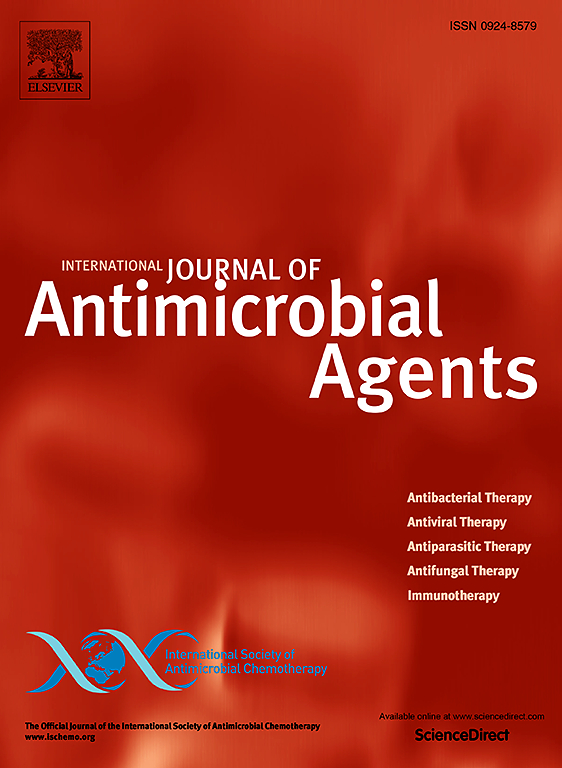Efficacy of a bacteriophage cocktail (Arash and Ariobarzanes) in the treatment of Salmonella typhimurium infection in rat model
IF 4.6
2区 医学
Q1 INFECTIOUS DISEASES
International Journal of Antimicrobial Agents
Pub Date : 2025-06-27
DOI:10.1016/j.ijantimicag.2025.107560
引用次数: 0
Abstract
Objective
The present study exploits Salmonella typhimurium-specific bacteriophages for their application in the treatment of infections caused by S. typhimurium ATCC 14028 in male Sprague-Dawley rats.
Methods
A bacteriophage cocktail including two phages, Arash and Ariobarzanes, belonging to the genera Arashvirus and Chivirus, respectively, was administered to rats inoculated with S. typhimurium, and microbiological, haematological, pathological, and immunological parameters were examined.
Results
Bacteriophage treatment resulted in a decrease in Salmonella spp. shedding in faeces and their internal organs, as well as at the reduction of the levels of inflammatory cytokines, including tumour necrosis factor alpha and interleukin-8, on different days from d 0 to d 9 post-infection. However, oral gavage of this phage cocktail did not have a significant and visible effect on the improvement of pathological lesions in organs such as the liver and cecum, as well as on haematological and serum biochemical indices.
Conclusions
Therefore, a cocktail including phages Arash and Ariobarzanes can at least reduce the S. typhimurium counts in faeces, organs, and inflammatory mediators in rats with Salmonellosis infection.

一种噬菌体鸡尾酒(Arash和Ariobarzanes)治疗鼠伤寒沙门菌感染模型的疗效:成功与失败分析。
目的:利用鼠伤寒沙门菌特异性噬菌体治疗雄性sd - dawley大鼠鼠伤寒沙门菌ATCC 14028感染。方法:将Arash和Ariobarzanes两种噬菌体(分别属于Arashvirus属和Chivirus属)接种于鼠伤寒沙门氏菌接种大鼠后,观察其微生物学、血液学、病理学和免疫学指标。结果:在感染后第0天至第9天,噬菌体处理导致沙门氏菌在粪便和内脏中的脱落减少,炎症细胞因子水平降低,包括肿瘤坏死因子α (TNF-α)和白细胞介素8 (IL-8)。然而,口服该噬菌体鸡尾酒对肝脏、盲肠等脏器病理病变的改善以及血液学和血清生化指标均无明显改善作用。结论:含有Arash和Ariobarzanes的噬菌体鸡尾酒至少可以减少沙门氏菌感染大鼠粪便、器官和炎症介质中的鼠伤寒沙门氏菌计数。
本文章由计算机程序翻译,如有差异,请以英文原文为准。
求助全文
约1分钟内获得全文
求助全文
来源期刊
CiteScore
21.60
自引率
0.90%
发文量
176
审稿时长
36 days
期刊介绍:
The International Journal of Antimicrobial Agents is a peer-reviewed publication offering comprehensive and current reference information on the physical, pharmacological, in vitro, and clinical properties of individual antimicrobial agents, covering antiviral, antiparasitic, antibacterial, and antifungal agents. The journal not only communicates new trends and developments through authoritative review articles but also addresses the critical issue of antimicrobial resistance, both in hospital and community settings. Published content includes solicited reviews by leading experts and high-quality original research papers in the specified fields.

 求助内容:
求助内容: 应助结果提醒方式:
应助结果提醒方式:


